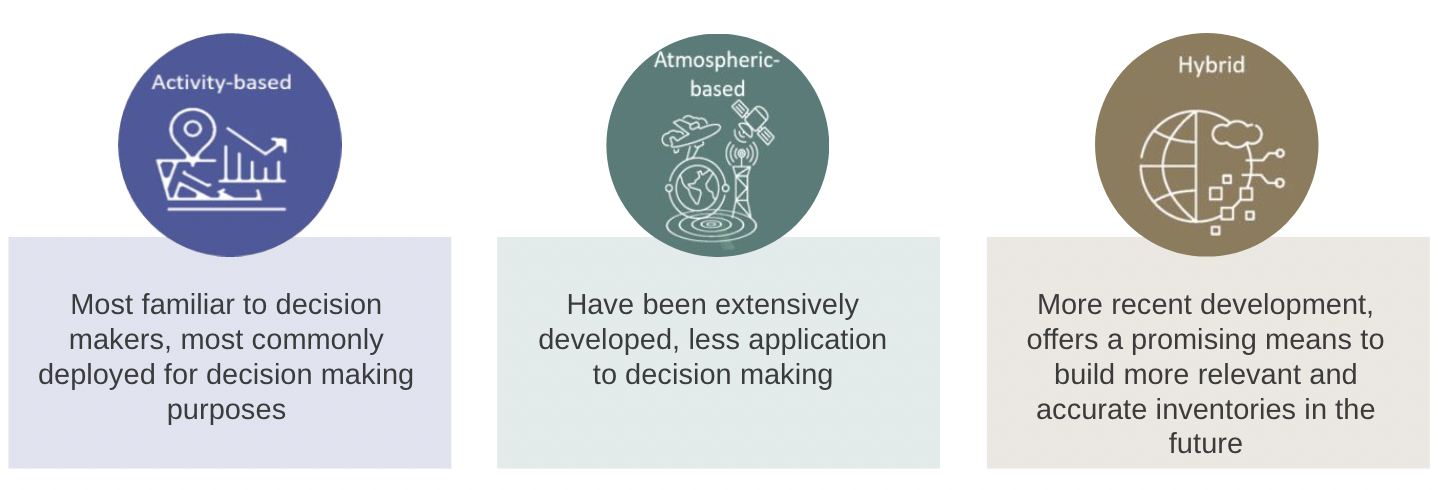
On October 4th, the National Academies of Sciences, Engineering, and Medicine (NASEM) Committee on Development of a Framework for Evaluating Global Greenhouse Gas Emissions Information for Decision Making released a report examining approaches to evaluate greenhouse gas (GHG) emissions information.
NASEM convened this committee ahead of COP 27 in response to three converging trends: increasing demand for GHG emissions information, the multitude of fragmented and self-contained approaches developed to meet this demand, and a rapidly growing and evolving institutional landscape comprised of public, private, and academic entities seeking to provide better GHG emissions information for decision-making purposes.
DDL Director Angel Hsu was named to the NASEM Committee in May and played an instrumental role in the policy research for this report.
In the status quo, quantifying GHG emissions is challenging because of the vast array of point-source emitters (i.e. emissions from a power plant) and nonpoint-source emitters (i.e. emissions from individual gas-powered vehicles). Although there are existing approaches to account for GHG emissions information from both source types, namely activity-based, atmospheric-based and hybrid approaches, it is currently impossible to aggregate and compare data from these approaches.
Simply put, although there are various groups working to solve the issue of accounting for GHG emissions information, their approaches are not synergistic, comparable, or easy to aggregate.

Source: National Academies of Sciences, Engineering, and Medicine
Despite the challenges and incongruencies with how GHG emissions are currently measured and tracked, GHG accounting mechanisms are crucial to ensuring that we are on-track to meet our climate goals and slow anthropogenic climate change.
The NASEM report helps policymakers and other COP 27 stakeholders cut through the noise with the proposal to use six pillars as a guiding framework to evaluate the quality of GHG emissions information:
- Usability and Timeliness: information is comparable and responsive to decision-maker needs and available on timescales relevant to decision-making;
- Information Transparency: information is both publicly available and traceable by anyone;
- Evaluation and Validation: review, assessment, and comparison to independent datasets;
- Completeness: coverage of all sources and GHGs for the relevant geographic boundary;
- Inclusivity: what populations are involved in GHG emissions information collection and covered by the information;
- Communication: methodologies and assumptions are described in understandable terms, well documented, and openly accessible.
Using these six pillars as guiding principles to vet GHG emissions data will help policymakers, businesses, and academic institutions improve the quality and communication of climate data.

Source: National Academies of Sciences, Engineering, and Medicine
Ideally, these six pillars would be incorporated into the construction of a coordinated repository for storing GHG emissions accounts from the global community. Such an institution could mandate universal characteristics and taxonomies for the standardization and management of emissions data, while engaging reporters and users in an iterative process to ensure timeliness of emissions data updates. Establishing standards and practices for maintaining high-quality and comparable emissions data promotes increased understanding and trust in consumers of this data.
The GHG emissions information stored in such a coordinated repository should not only include data at the national and international level, but also at the local level, in granular detail and high spatial resolution. For successful stocktaking efforts that assess progress towards global climate goals, more and better data from cities, states, provinces, and businesses to inform decision-making at the local level are needed. Analyzing and standardizing climate data from subnational and non-state actors is a major focus of our work at the Data-Driven EnviroLab.
Access the full report here.
Read the highlights of the report here.

Recent Comments